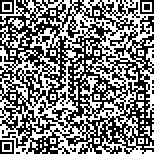| 引用本文: | 刘文浩,陈燕,王杰,丁叶,张泽群,潘明诗.SLM成型零件型腔内表面电解辅助磁粒研磨加工研究∗[J].中国表面工程,2021,34(3):100~109 |
| Liu Wenhao,Chen Yan,Wang Jie,Ding Ye,Zhang Zequn,Pan Mingshi.Study on Electrolysis Assisted Magnetic Abrasive Finishing of SLM Parts Cavity Surface[J].China Surface Engineering,2021,34(3):100~109 |
|
| |
|
|
| 本文已被:浏览 1690次 下载 767次 |

码上扫一扫! |
|
|
| SLM成型零件型腔内表面电解辅助磁粒研磨加工研究∗ |
|
刘文浩, 陈燕, 王杰, 丁叶, 张泽群, 潘明诗
|
|
辽宁科技大学机械工程与自动化学院 鞍山 114051
|
|
| 摘要: |
| 为了去除选区激光熔化技术成型的零件表面缺陷和降低表面粗糙度,并寻求最佳的加工参数。 从理论上解析电解辅助磁粒研磨的加工机理,利用仿真软件模拟加工区域的磁感应强度分布,设计 Box-Behnken 试验方案,先对材料为 Ti6Al4V 的钛合金工件表面进行电解钝化,后进行机械磁粒研磨,根据试验结果建立表面粗糙度的二次响应回归方程并对建立的数学模型进行方差分析,最后用响应面分析法分析主轴转速、磨料粒径、电解温度和电解电压对表面粗糙度的影响规律,得到最佳的加工参数,在最佳工艺参数下对磁粒研磨和电解辅助磁粒研磨的加工效果进行比较和分析。 建立的回归方程调整后的拟合优度为 92. 14%,经过优化后的电解辅助磁粒研磨最佳加工参数如下:电解液为浓度 16%的硝酸钠溶液,电解温度 28 ℃ ,电解电压 12 V,磨料粒径 180 μm,主轴转速 1 100 r/ min,使用磁粒研磨加工 60 min 后,工件表面粗糙度由原始的 Ra 10. 7 μm 降为 Ra 0. 52 μm,使用电解辅助磁粒研磨加工 60 min 后,工件表面粗糙度由原始的 Ra 10. 7 μm 降为 Ra 0. 354 μm。 使用电解辅助磁粒研磨可以有效去除选区激光熔化技术成型零件型腔内表面的缺陷,并降低零件的表面粗糙度,通过响应面分析法可以有效优化加工参数,使用电解辅助磁粒研磨加工比单一磁粒研磨加工的加工效果好,加工效率高。 |
| 关键词: 磁粒研磨 电解辅助磁粒研磨 选区激光熔化 表面粗糙度 响应面分析 加工参数 |
| DOI:10.11933/j.issn.1007-9289.20210309002 |
| 分类号:TG356 |
| 基金项目:国家自然科学基金(51775258)、辽宁省自然科学基金重点项目(20170540458)和精密与特种加工教育部重点实验室基金(B201703)资助项目 |
|
| Study on Electrolysis Assisted Magnetic Abrasive Finishing of SLM Parts Cavity Surface |
|
Liu Wenhao, Chen Yan, Wang Jie, Ding Ye, Zhang Zequn, Pan Mingshi
|
|
School of Mechanical Engineering and Automation, University of Science and Technology, Anshan 114051 , China
|
| Abstract: |
| In order to remove the surface defects and reduce the surface roughness of parts formed by selective laser melting technology, and seek the best processing parameters. The mechanism of electrolysis assisted magnetic abrasive finishing was analyzed theoretically, and the magnetic induction distribution in the machining area was simulated by using the simulation software. The box Behnken test scheme was designed. Firstly, the surface of titanium alloy workpiece with Ti6Al4V was electrolytically passivated, and then mechanical magnetic abrasive grinding was carried out. According to the test results, the quadratic response regression equation of surface roughness was established, and the established mathematical model was analyzed by variance. Finally, the influence of spindle speed, abrasive particle size, electrolysis temperature, and electrolysis voltage on the surface roughness was analyzed by the response surface method, and the best machining parameters were obtained. Under the optimal process parameters, the machining effects of magnetic abrasive finishing and electrolytic assisted magnetic abrasive finishing were compared. The goodness of fit of the established regression equation was 92. 14%, and the optimized parameters were as follows: electrolyte was 16% sodium nitrate solution, electrolysis temperature was 28 ℃ , electrolysis voltage was 12 V, abrasive particle size was 180 μm, spindle speed was 1 100 r/ min,The surface roughness of the workpiece was reduced to Ra 0. 52 μm by magnetic abrasive finishing and Ra 0. 354 μm by electrolysisassisted magnetic abrasive finishing. Electrolysis assisted magnetic abrasive finishing can effectively remove the surface defects and reduce the surface roughness of parts formed by selective laser melting technology. The processing parameters can be optimized effectively by response surface analysis. The results show that the machining effect of electrolysis assisted magnetic abrasive finishing is better than that of single magnetic abrasive finishing. |
| Key words: magnetic abrasive finishing electrolysis assisted magnetic abrasive finishing selective laser melting surface roughness response surface methodology processing parameters |
|
|
|
|

